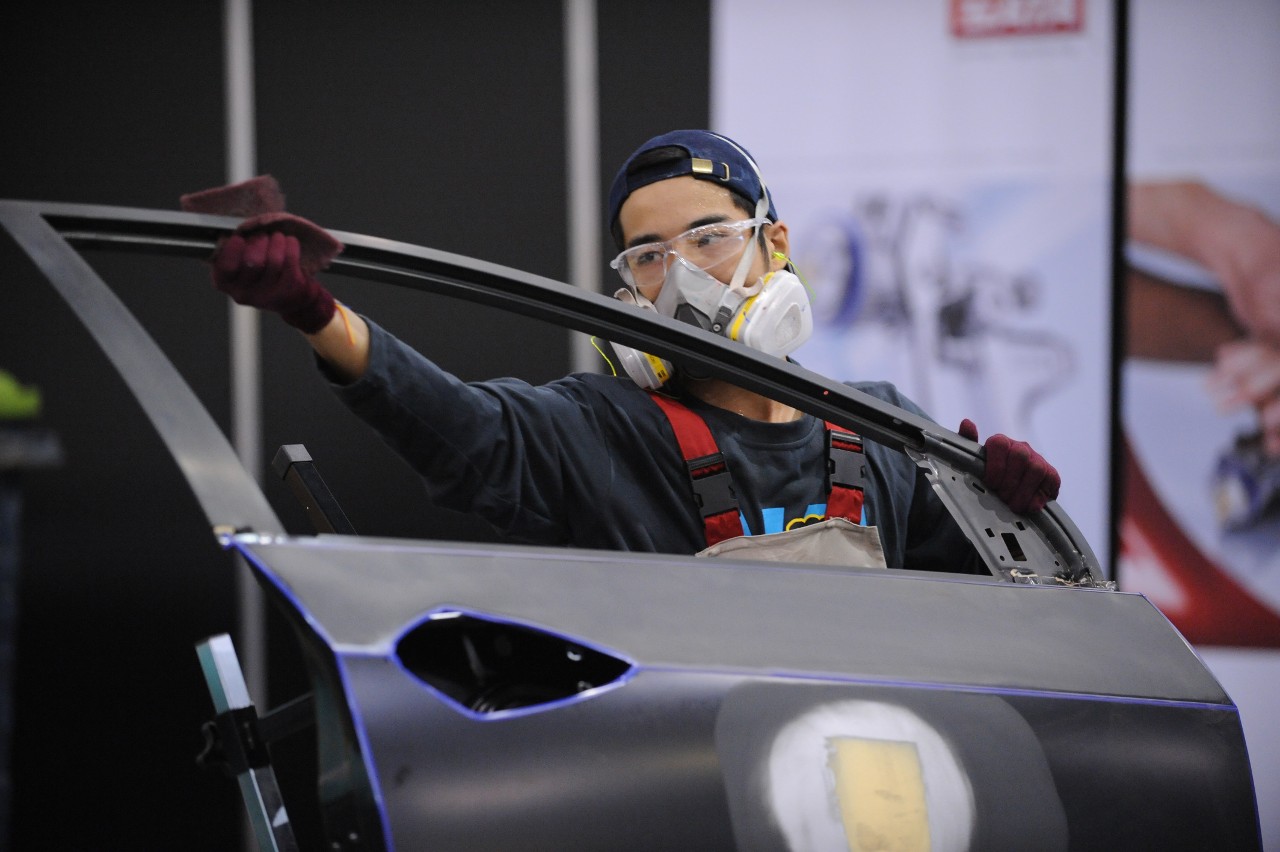Car Painting 36
Car painters (refinishers) are responsible for reinstating the pre-accident paint finish to cars after the structure and/or the panels have been repaired or replaced. They may also be asked to completely repaint a whole vehicle either to change its colour or reinstate its newness. Car painters may also become involved in matching colours to an original colour no longer available or to colours that prove difficult to match. A car painter must match the colour, shade and texture of the adjoining panels that are not being painted.
Car painters can work in various work environments from an autobody repair shop to an aircraft hangar, dependent upon what vehicle or transport system they are painting. They work to apply paints inside an enclosed spray booth/oven in order to protect the environment from harmful products.
Car painters prepare panels or vehicles to receive paint. They may carry out minor panel repairs and apply undercoats, colour coats and clear sealant coats which provide the high gloss levels required. They may be required to identify a colour code using various methods, mix the correct amount of colour to pre-determined formulae and spray test cards to test the suitability of this colour match to the original colour and shade.
A Car painter needs to be aware of time schedules and may often be working on several vehicles at one time while waiting for previously applied materials to dry.
Car painters (refinishers) may be required to refinish a wide range of items such as passenger cars, racing cars, vintage and classic vehicles, commercial goods vehicles, trains, aeroplanes, static structures or furniture. They may be required to refinish a wide variety of materials such as metals, plastics, composite materials or wood.
Required skills
Communications, customer relation skills, reading, mathematics, critical thinking, good eyesight, attention to detail, problem-solving skills, work under supervision and training.
Career info
Car painters (refinishers) are responsible for reinstating the pre-accident paint colour and finish to vehicles after the panels, structure, or entire car have been repaired or replaced. Car painting requires professionals to refinish a wide variety of materials such as metals, plastics, composite materials or wood.
Car painters prepare surfaces to receive paint, which may involve making minor repairs; then, they apply undercoats, colour coats and sealant coats which provide the high gloss levels required. They may be required to identify a colour code using various methods, mix the colour to pre-determined formula and spray test cards to test the suitability of this colour match to the original colour and shade. Typically they will apply paints inside an enclosed spray booth in order to protect the environment.
Often, a car painter works on several vehicles at one time, requiring a keen awareness of overall schedule as well as the time it takes to apply and dry individual coats and finishes.
Car painters have opportunities to work on passenger cars, high-performance racing cars, high-price and unique vintage and classic vehicles, commercial vehicles, and even trains, aeroplanes, static structures, or furniture.
At the Competition
Competitors will be judged on the following activities
- Preparing, cleaning, and degreasing OEM surfaces including plastics, and fibreglass/composite materials.
- Masking areas not to be processed
- Bringing bodywork back to its original shape by filling and sanding
- Applying primer and filler or a mixture of both
- Sanding and masking
- Mixing the finishing paint, applying the correct colour formula; preparing a colour sample
- Sanding and polishing defects
- Applying decoration such as stripes, bands and shades
- Spraying of finishing paint;
- 2K solid colour acrylic urethane
- Clear over base metallic, pearl
- 2 and 3 layer pearl
- HS clear
- Waterborne base coats
- Special decorative paints such as chromaflare and tinted clearcoat
- Metal panels (bare, pre-painted or OEM)
- Plastic parts including fibreglass/composite materials

